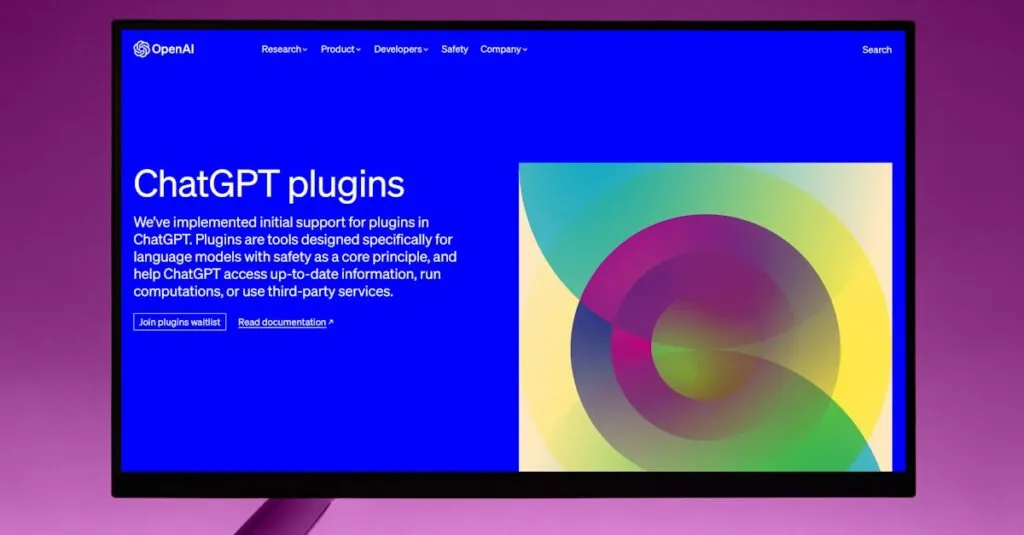In a world where your toaster can chat with your fridge, the Internet of Things (IoT) architecture is the unsung hero behind this digital magic. Imagine a symphony of devices, all harmonizing to make life easier, smarter, and just a tad more amusing. From smart homes to connected cities, IoT architecture lays the groundwork for a future where everything is just a click away—or a voice command if you’re feeling fancy.
Table of Contents
ToggleOverview of Internet of Things Architecture
Internet of Things (IoT) architecture consists of several essential layers that facilitate communication, processing, and data analysis. The main layers include perception, network, and application. Each layer plays a distinct role in ensuring the efficient functioning of IoT systems.
Perception layer involves sensors and devices that collect data from the environment. Devices like temperature sensors and motion detectors provide real-time information. These sensors detect physical elements and convert them into digital signals for further processing.
Network layer focuses on transferring data between devices and central systems. Technologies used in this layer include Wi-Fi, Bluetooth, and cellular networks. Reliable communication protocols ensure seamless data flow, connecting millions of devices across various locations.
Application layer encompasses the software applications that utilize the data collected. This layer directly interacts with users and manages tasks such as controlling smart appliances or monitoring environmental conditions. Applications range from home automation systems to industrial monitoring platforms.
Security is a critical aspect woven throughout each layer. Implementing strong encryption and authentication mechanisms safeguards data during transmission and access. Organizations prioritize security measures to protect sensitive information from breaches.
Expanding the IoT ecosystem involves integrating cloud computing and edge computing. Cloud services offer dynamic storage and advanced analytics capabilities. In contrast, edge computing reduces latency by processing data closer to the source, enhancing real-time decision-making.
Understanding IoT architecture provides insight into how interconnected devices transform daily life. It clarifies how practical applications arise from seamless device interactions, aiming to create efficient, smart environments.
Key Components of Internet of Things Architecture
Understanding the key components of IoT architecture is essential for grasping how interconnected devices operate. Each component plays a vital role in facilitating communication and data processing among devices.
Sensing Layer
The sensing layer consists of sensors and actuators that gather data from the environment. Temperature sensors, motion detectors, and moisture sensors exemplify devices in this layer. Collectively, they monitor conditions and user interactions, translating physical phenomena into digital signals. Data acquisition occurs in real-time, allowing for immediate processing. This layer acts as the starting point for all IoT systems, providing critical information to subsequent layers.
Network Layer
The network layer serves as the conduit for data transmission between devices and centralized systems. Various technologies like Wi-Fi, cellular networks, and Bluetooth enable connectivity. Devices communicate with gateways, which aggregate and route data for further processing. Reliable protocols ensure data integrity and timely delivery. Scalability becomes a crucial aspect, accommodating increasing device loads without compromising performance.
Application Layer
The application layer focuses on analyzing and utilizing the data collected from the sensing and network layers. Software applications process, visualize, and control smart devices, enabling functionality such as home automation and industrial monitoring. Specific applications may include energy management, healthcare monitoring, and predictive maintenance. User interfaces often display insights, allowing users to interact seamlessly with their environments.
Types of Internet of Things Architectures
Understanding the types of IoT architectures is essential for grasping how interconnected devices operate. Each architecture type addresses specific needs and optimizes data management.
Cloud-Based Architecture
Cloud-based architecture centralizes data processing and storage in cloud servers. Devices send data to the cloud for analysis and retrieval. Scalability benefits organizations, as they can easily adjust resources based on demand. Cloud platforms, such as AWS or Azure, provide tools for managing IoT applications. Security protocols, including encryption, safeguard data during transmission. Organizations benefit from cost-effectiveness and reduced maintenance burdens.
Fog Computing Architecture
Fog computing architecture acts as an intermediary between edge devices and cloud services. It processes data closer to the source, minimizing latency and bandwidth usage. Local nodes enhance response times for time-sensitive applications. Fog nodes can perform rudimentary data analysis, filtering irrelevant data before sending it to the cloud. Enhanced security features protect data within the local network. Organizations experience improved real-time capabilities and efficient data flow.
Edge Computing Architecture
Edge computing architecture processes data directly on IoT devices, enabling immediate analysis. It eliminates reliance on centralized servers, resulting in lower latency and faster response times. Devices, like sensors and smart appliances, handle critical tasks without sending all information to the cloud. This approach enhances privacy and security by keeping sensitive data local. Organizations gain valuable insights quickly, enhancing decision-making and efficiency. System performance improves significantly due to reduced data transmission volume.
Challenges in Internet of Things Architecture
Various challenges arise within IoT architecture, impacting its functionality and adoption. Two prominent concerns are security and scalability.
Security Issues
Security issues pose significant risks to IoT systems, where vulnerabilities in devices can lead to data breaches. Unauthorized access can compromise sensitive information, highlighting the need for strong encryption methods. Inadequate authentication procedures often open doors for cyberattacks. Continuous monitoring and updates become essential to mitigate potential threats. Organizations must adopt a proactive security approach, ensuring devices and data remain protected against evolving attack vectors.
Scalability Concerns
Scalability concerns significantly affect the growth of IoT systems, especially when the number of connected devices increases. As the network expands, maintaining performance and efficiency poses challenges. Network congestion may happen if infrastructure can’t handle extensive data flow. Solutions such as distributed computing can assist in managing larger workloads. Developing modular architectures allows for easy integration of new devices without sacrificing system integrity. Robust planning is essential to accommodate future growth and evolving technological needs.
Future Trends in Internet of Things Architecture
Emerging developments in Internet of Things architecture focus on several key trends shaping the future landscape. Increased adoption of artificial intelligence integrates with IoT, enhancing data processing and enabling smarter decision-making across devices. With AI, systems can learn from data patterns, leading to predictive analytics that proactively addresses potential issues.
Another advancement highlights the role of 5G technology in IoT architecture. Enhanced network capabilities improve data transmission speeds and support a higher density of connected devices. As 5G networks expand, real-time applications will flourish, particularly in smart cities and autonomous vehicles.
Exploration of decentralized systems gains momentum among developers. Blockchain technology introduces robust security solutions while ensuring data integrity and transparency. Such decentralized approaches protect against data breaches frequently associated with centralized systems.
Furthermore, sustainability emerges as a significant consideration in IoT architecture. Energy-efficient devices and smart energy management solutions contribute to reduced environmental impact. Innovations aim to minimize energy consumption while maintaining performance across various IoT applications.
Collaboration between manufacturers and developers drives the creation of open standards. Such standards foster interoperability among diverse IoT devices, allowing seamless communication and integration. This interoperability facilitates a cohesive ecosystem where devices can function together effectively.
Lastly, edge computing’s prominence continues to rise, allowing data processing at or near the source, reducing latency. By minimizing reliance on cloud servers, edge computing enhances performance for real-time applications, optimizing user experiences across smart environments.
Future trends in IoT architecture will advance technologies and drive innovation, impacting the way devices interact and function in everyday life.
The evolution of IoT architecture is reshaping how devices interact and function within our daily lives. By integrating various layers and leveraging advanced technologies, it creates a seamless experience that enhances convenience and efficiency. As security and scalability challenges are addressed through innovative solutions, the potential for smarter environments continues to grow.
Emerging trends like artificial intelligence and 5G technology promise to further revolutionize IoT applications. The shift towards decentralized systems and energy-efficient designs reflects a commitment to sustainability and data integrity. This interconnected landscape not only transforms personal spaces but also paves the way for smarter cities and industries, marking a significant step toward a more efficient future.





